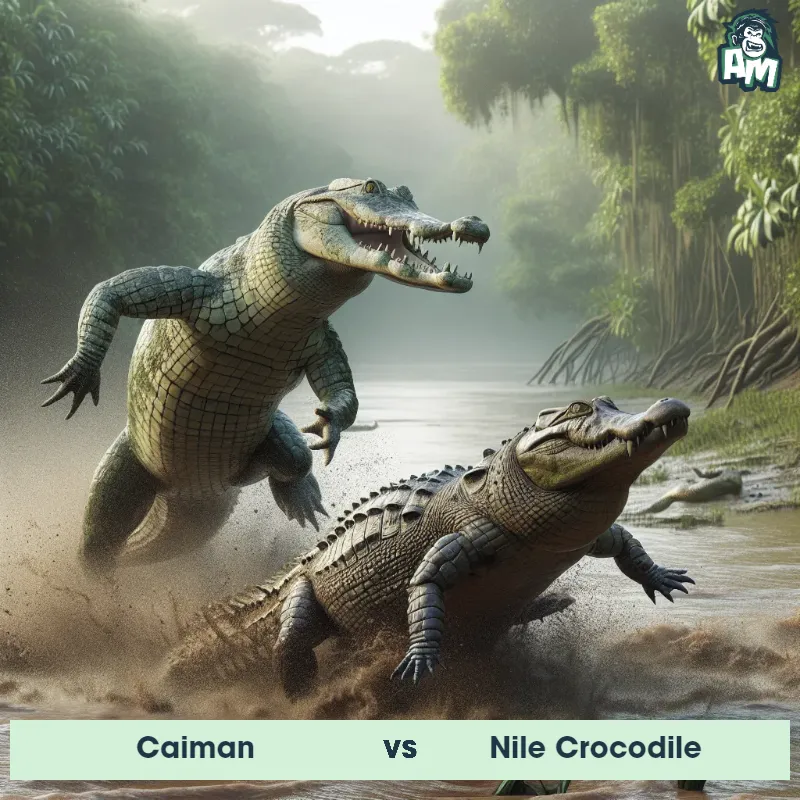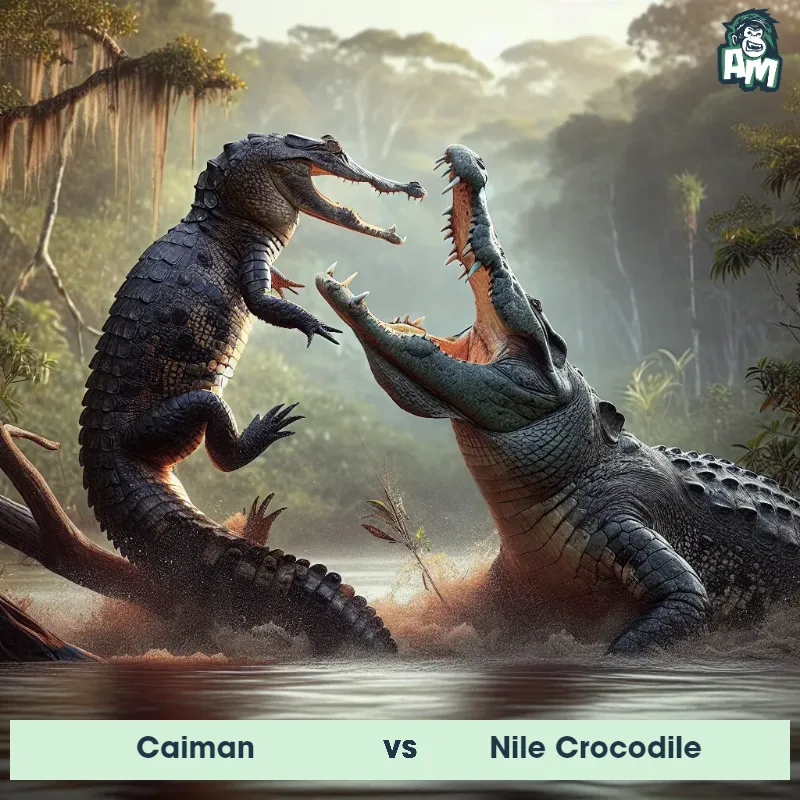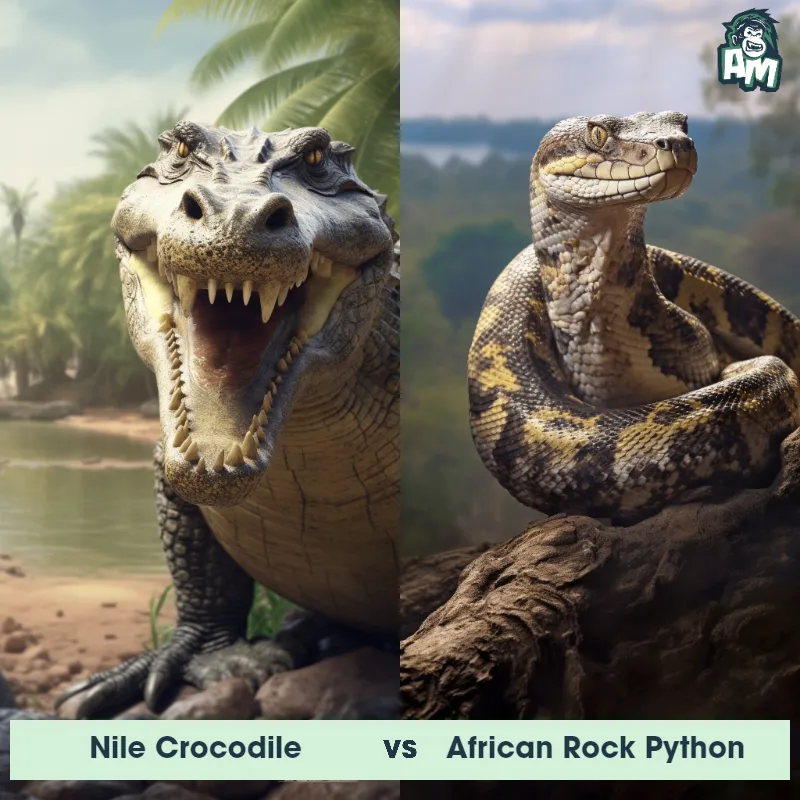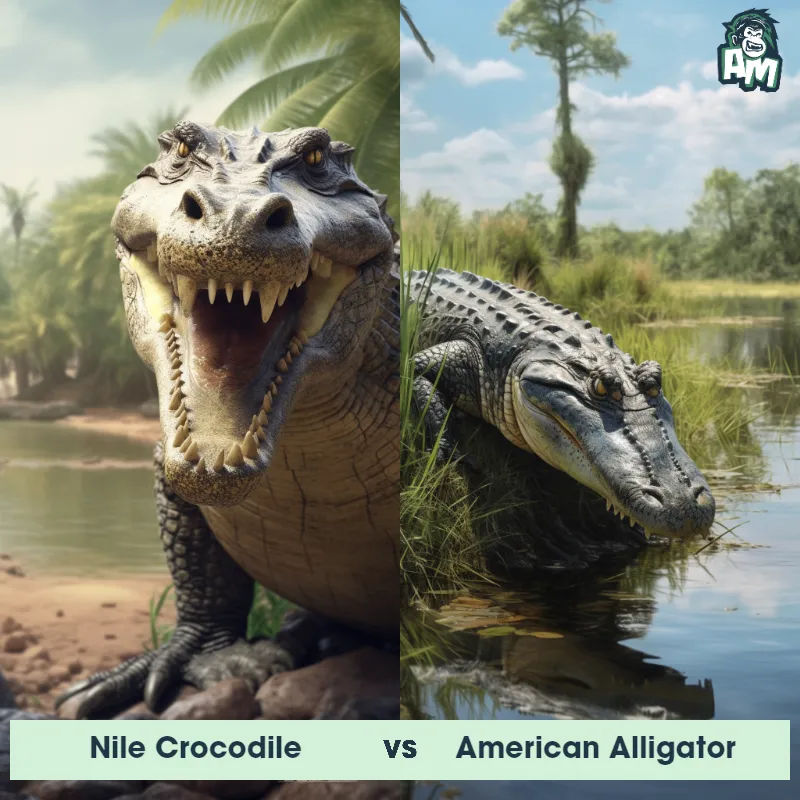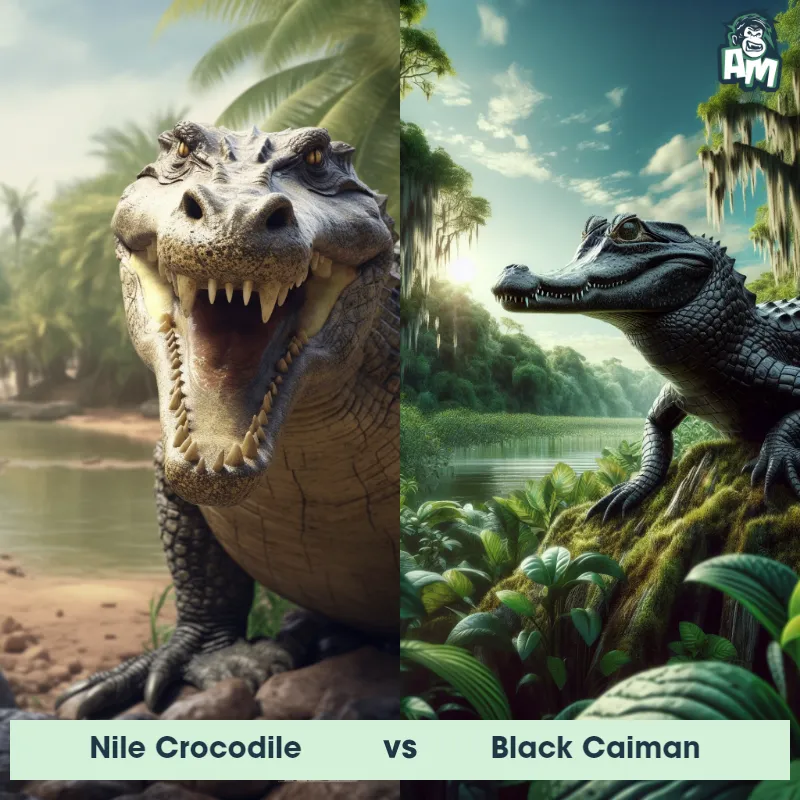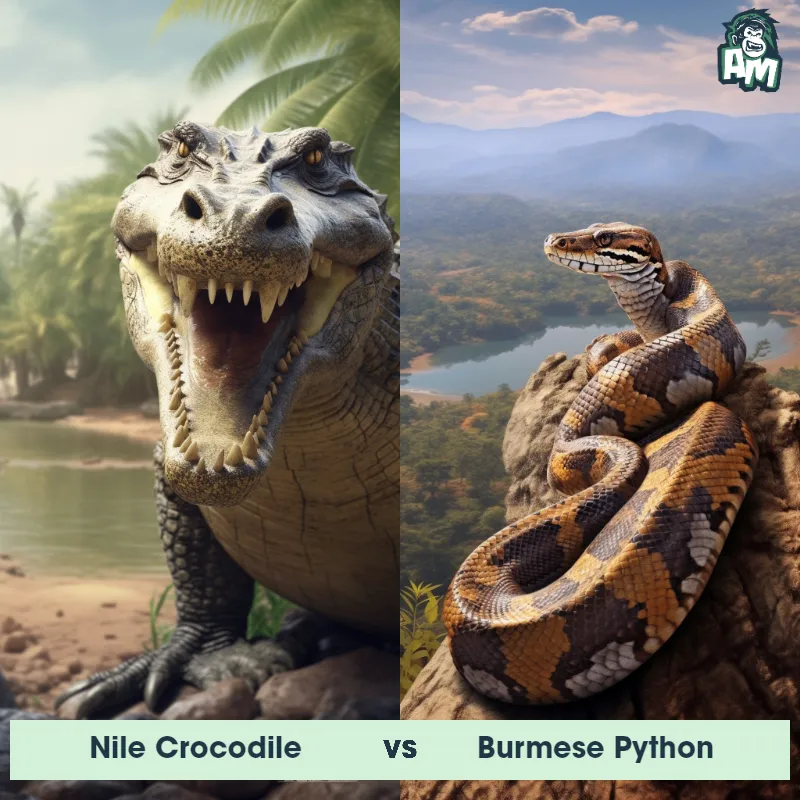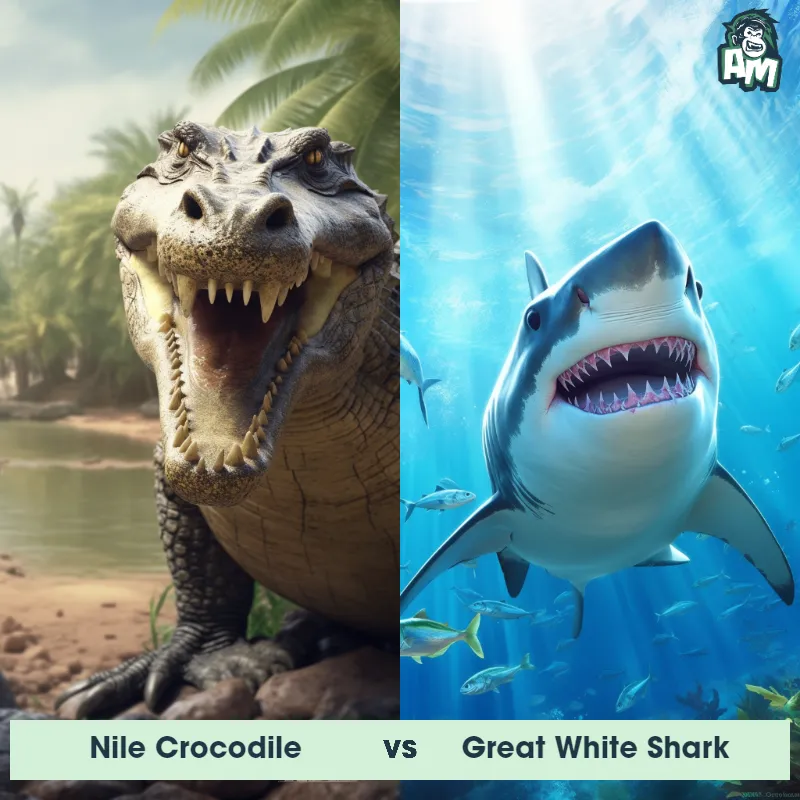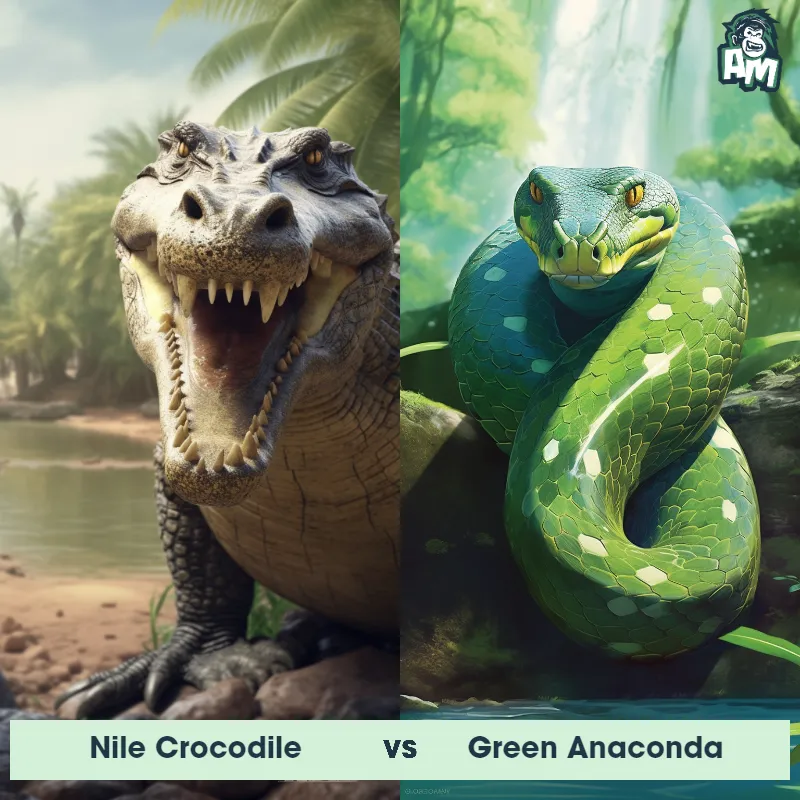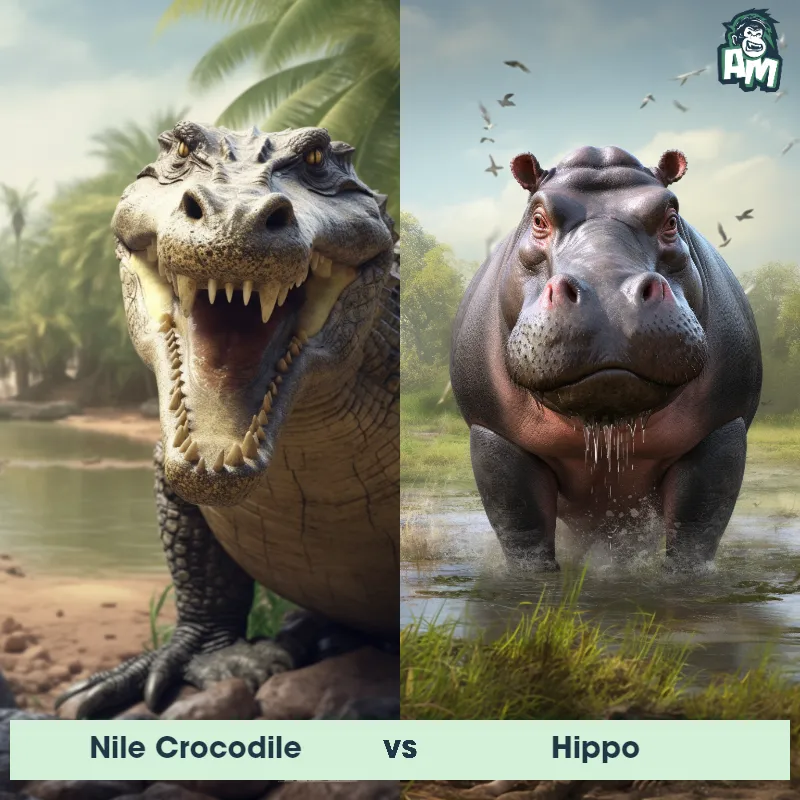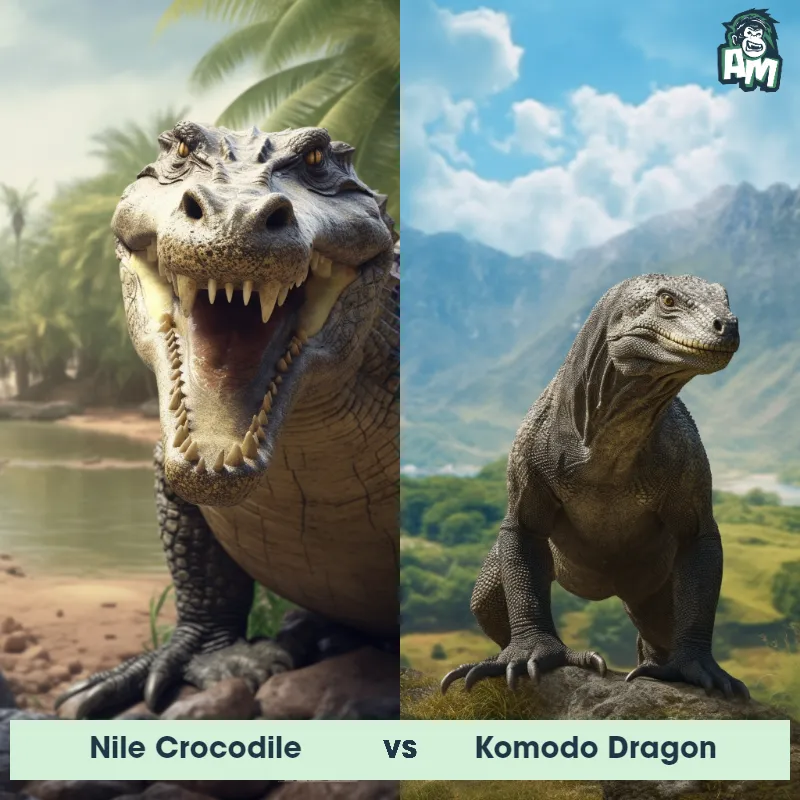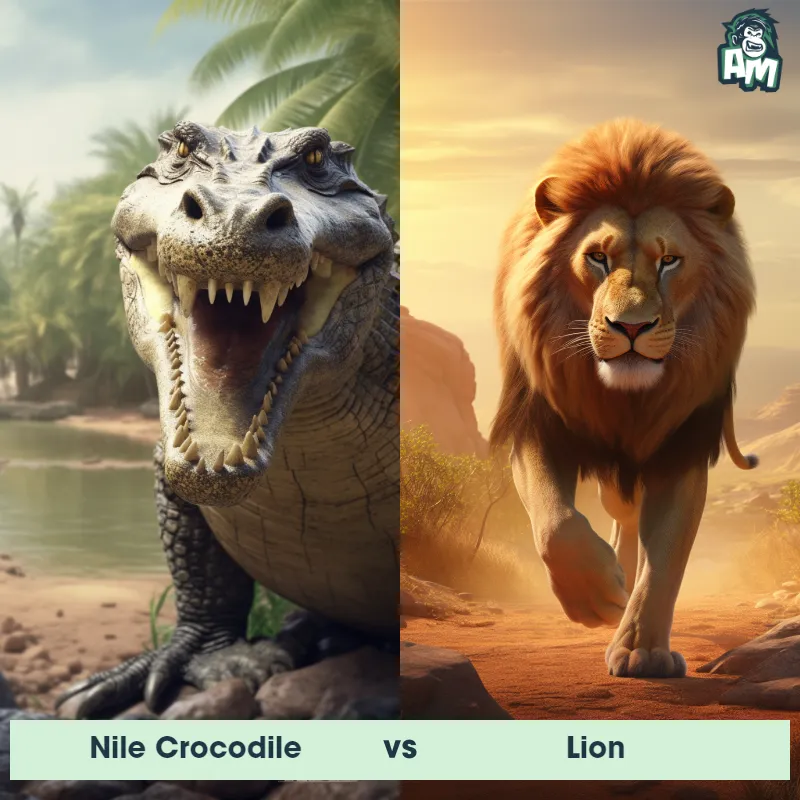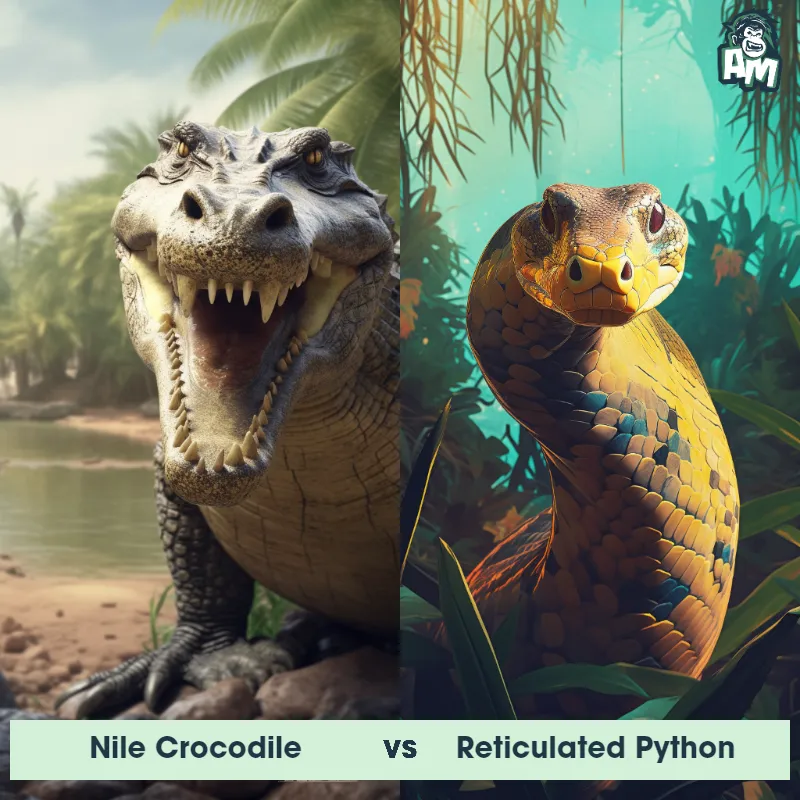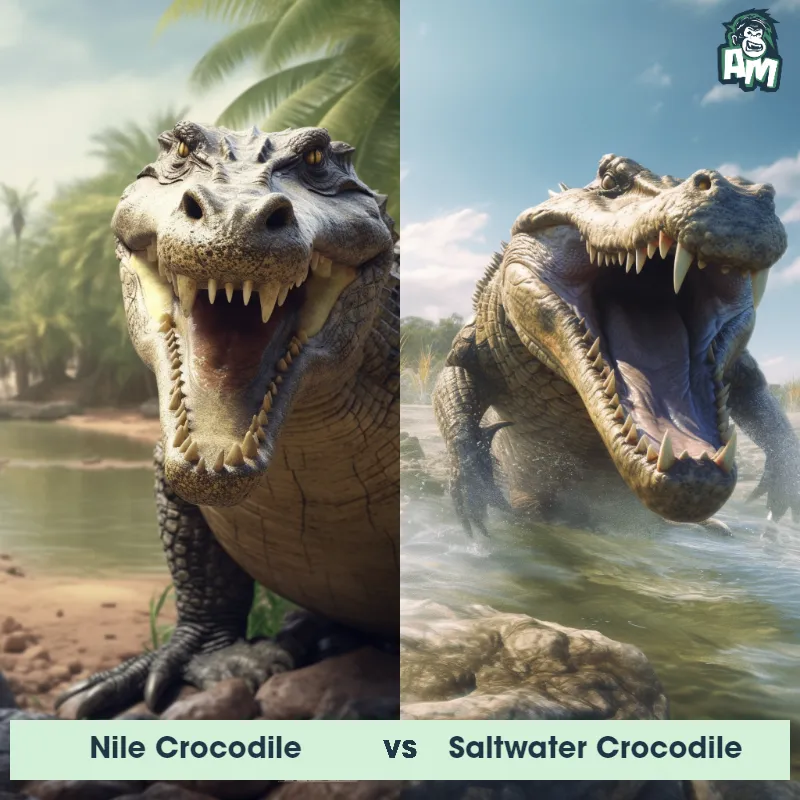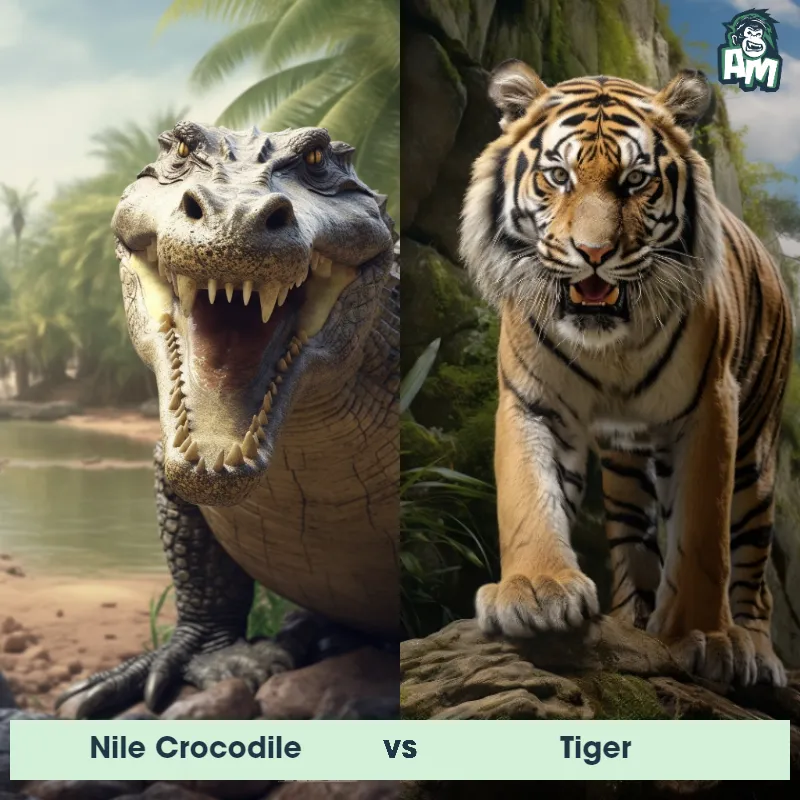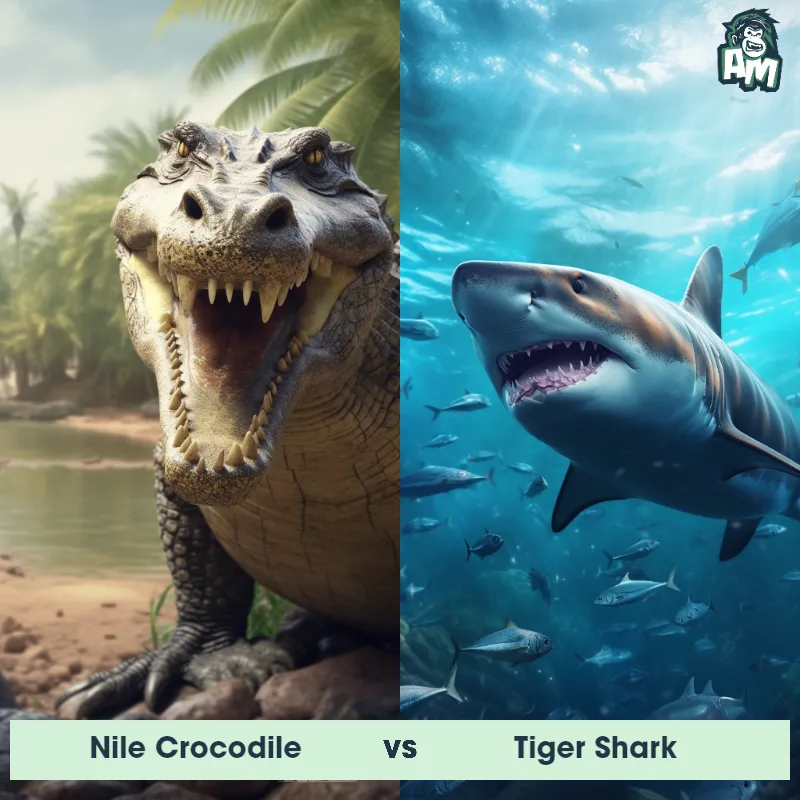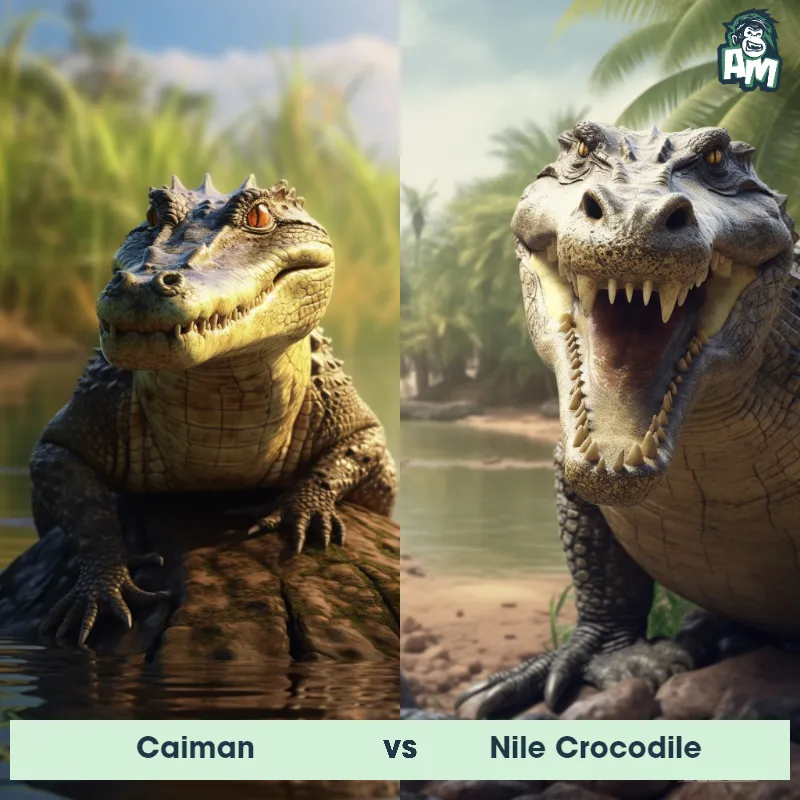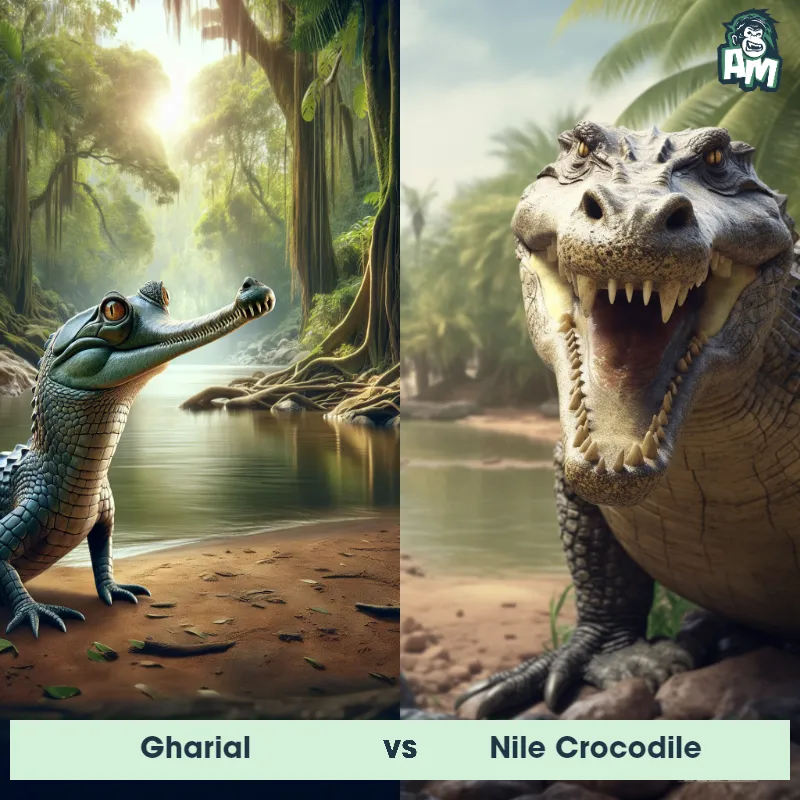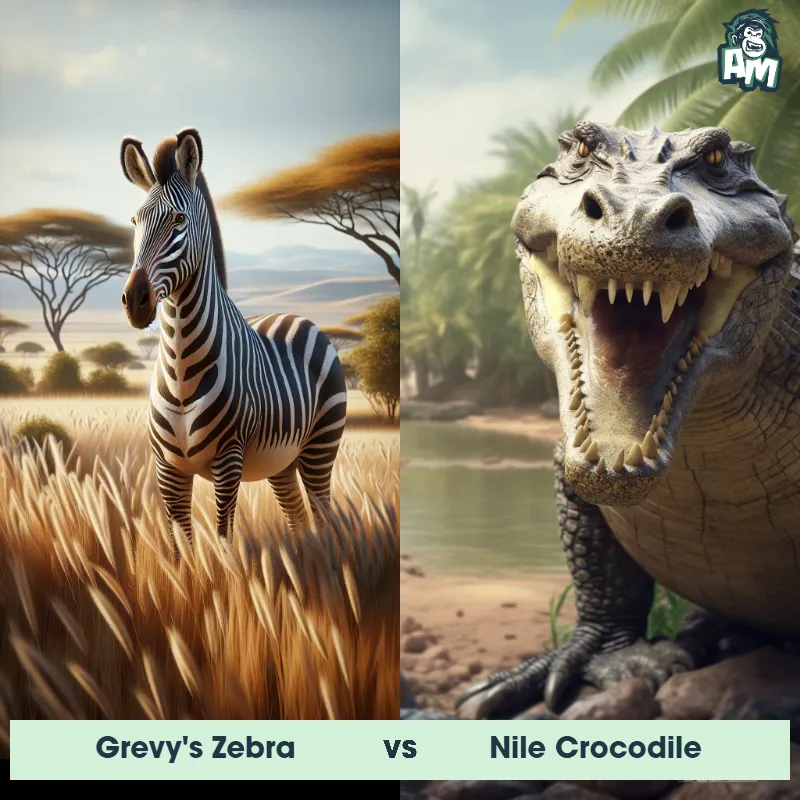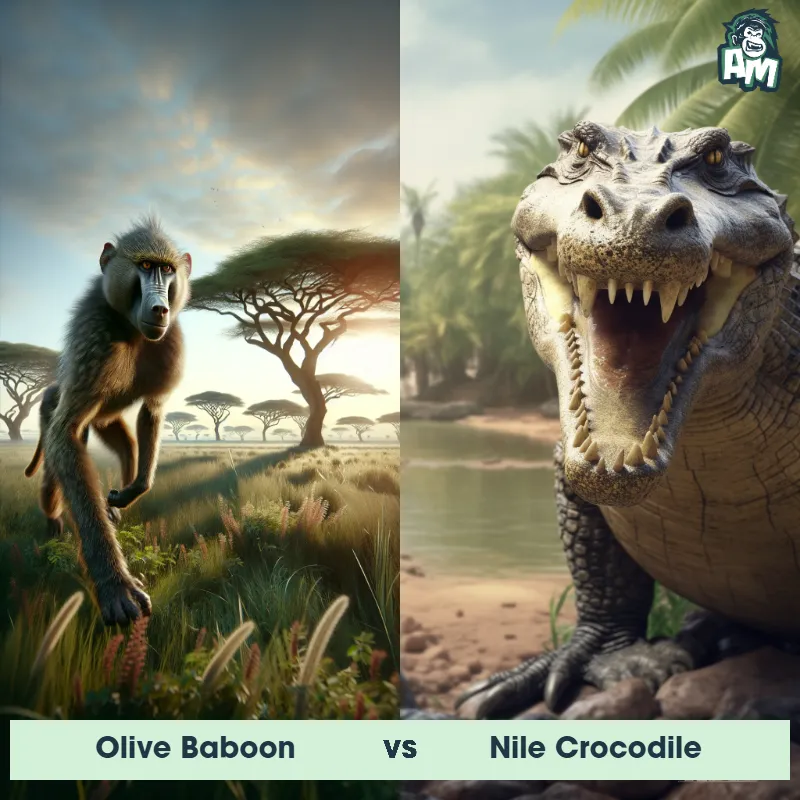The Nile Crocodile
The Nile Crocodile is a large, fearsome reptile found mainly in sub-Saharan Africa. Growing up to 20 feet in length and weighing up to 1,650 pounds, it is one of the largest reptiles in the world. With its muscular body, armored skin, and powerful jaws filled with sharp teeth, the Nile Crocodile is a formidable predator both on land and in water. It has a long snout, powerful tail, and four short legs with webbed feet, enabling it to swim swiftly and navigate through swamps and rivers. Their coloration can vary from olive green to brown, providing excellent camouflage in their natural habitat.
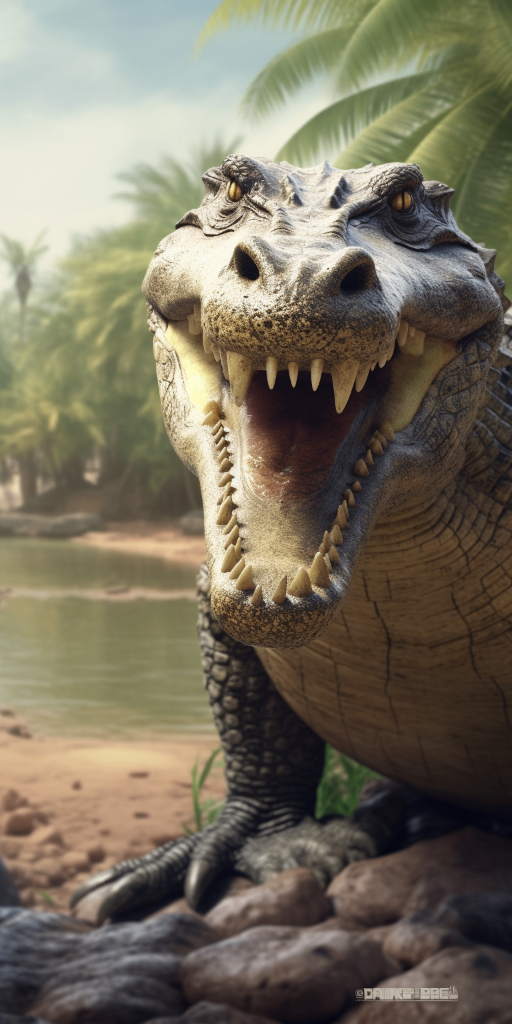
| Nile Crocodile | |
|---|---|
| Size | Up to 20 feet (6.1 meters) |
| Weight | Over 1,000 pounds (453.6 kilograms) |
| Speed | Land Speed: 11 mph (18 km/hr) |
| Key Strength | Powerful jaw and strong bite force |
| Biggest Weakness | Slow on land and vulnerable to attacks on the underside of its body |
| Scientific Name | Crocodylus niloticus |
| Family | Crocodylidae |
| Habitat | Freshwater rivers, lakes, and marshes |
| Geography | Sub-Saharan Africa |
| Diet | Carnivorous, eats fish, birds, mammals, and occasionally humans |
| Lifespan | 70 years - 100 years |

The Nile Crocodile
The Nile Crocodile is a large, fearsome reptile found mainly in sub-Saharan Africa. Growing up to 20 feet in length and weighing up to 1,650 pounds, it is one of the largest reptiles in the world. With its muscular body, armored skin, and powerful jaws filled with sharp teeth, the Nile Crocodile is a formidable predator both on land and in water. It has a long snout, powerful tail, and four short legs with webbed feet, enabling it to swim swiftly and navigate through swamps and rivers. Their coloration can vary from olive green to brown, providing excellent camouflage in their natural habitat.
Fun Fact: Nile Crocodiles have a unique hunting technique where they submerge their entire body underwater, with only their eyes and nostrils exposed, waiting patiently to ambush prey that comes close to the water's edge.
| Nile Crocodile | |
|---|---|
| Size | Up to 20 feet (6.1 meters) |
| Weight | Over 1,000 pounds (453.6 kilograms) |
| Speed | Land Speed: 11 mph (18 km/hr) |
| Key Strength | Powerful jaw and strong bite force |
| Biggest Weakness | Slow on land and vulnerable to attacks on the underside of its body |
| Scientific Name | Crocodylus niloticus |
| Family | Crocodylidae |
| Habitat | Freshwater rivers, lakes, and marshes |
| Geography | Sub-Saharan Africa |
| Diet | Carnivorous, eats fish, birds, mammals, and occasionally humans |
| Lifespan | 70 years - 100 years |
Match Highlights
Nile Crocodile Matchups
We use AI to simulate matchups between the Nile Crocodile and other animals. Our simulation considers size, strength, and natural predatory behaviors to determine the most likely outcome.
Nile Crocodile: Diet, Predators, Aggression, and Defensive Behaviors
What do Nile Crocodiles eat?
Nile Crocodiles are apex predators and have a diverse diet that includes fish, birds, mammals, and even other reptiles. They are known to ambush their prey while it is drinking or crossing the water, using their powerful jaws to seize and drag it underwater to drown.
Do Nile Crocodiles have any predators?
Adult Nile Crocodiles do not have many natural predators due to their size and aggressive behavior. However, younger crocodiles may fall prey to large cats like lions and leopards, as well as large birds of prey.
Are Nile Crocodiles aggressive?
Nile Crocodiles are infamous for their aggressive behavior, especially during the breeding season when they become more territorial and aggressive towards intruders. They are known to attack humans if they feel threatened or are defending their territory.
Do Nile Crocodiles fight?
Nile Crocodiles are known to be territorial and will engage in fierce battles with each other, particularly during mating season or when establishing dominance. These fights can be violent and result in serious injuries or even death.
How do Nile Crocodiles defend themselves?
Nile Crocodiles primarily rely on their powerful jaws filled with sharp teeth to defend themselves against threats. They can deliver quick and deadly bites, capable of crushing bones and causing significant damage. They may also thrash their powerful tails or use their body weight to overpower attackers.
What is the biggest weakness of Nile Crocodiles in a fight?
Despite their formidable size and strength, Nile Crocodiles have a vulnerability in that they tire quickly due to their cold-blooded nature. This means that in prolonged fights or struggles, they may become fatigued and less effective in defending themselves, giving their opponents an advantage.
Fun Fact: Although Nile Crocodiles are mostly known for their carnivorous diet, they occasionally eat fruits such as watermelon.
Fun Fact: Nile Crocodiles are known for their strong maternal instincts. Female crocodiles build mound-like nests using vegetation and soil, where they lay around 60 to 80 eggs. The mother carefully guards the nest and will carry her newly hatched young to water in her mouth, providing protection and increased survival chances.



